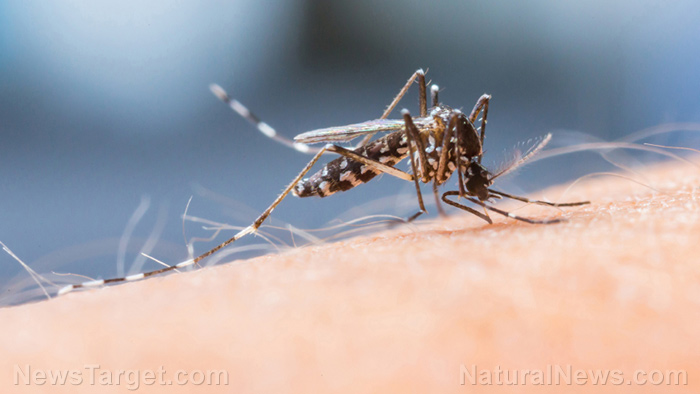 Parler
Parler Gab
Gab
Experts continue studies on novel influenza infections
The 42-year-old Brazilian woman died on May 5, two days after being hospitalized. On May 1, she exhibited symptoms such as fever, headache, sore throat and abdominal pain. She was admitted on May 3 and transferred to intensive care on May 4, dying the following day. Health authorities in the South American nation notified the WHO about the case on July 7, following tests that showed the woman's illness being caused by an H1N1 subtype linked to pig infections. However, a spokesperson for the CDC said the U.S. agency had not yet received a specimen from Brazil. Over in the U.S., swine flu typically jumps from animals to humans, primarily affecting agricultural workers or those attending fairs. Six cases were reported in 2022, with the most recent one occurring in September of that year at a Michigan fairground. The patient reportedly had direct contact with an infected pig. Since the 2009 swine flu pandemic that claimed the lives of up to 575,000 people worldwide, instances of swine flu infections in humans have been rare. Prior to the Brazilian woman's death, a 37-year-old woman in Vietnam died of the disease in 2019. This prompted authorities in the Southeast Asian nation to quarantine 40 individuals. According to CBS News, the CDC still conducts extensive studies on sequenced flu viruses each year, comparing their genetic makeup with previous variants affecting animals and humans. Experts in infectious diseases are concerned that future pandemics could arise from flu viruses like H1N1, which pigs can transmit. (Related: The next "pandemic" is already planned: SARS + HIV + H5N1.) Besides the alarming spread of avian flu among birds throughout the Americas, previous years also witnessed "novel influenza virus infections" when humans came into contact with animals at events such as agricultural fairs. "Given the severity of illness in the recent human cases, the CDC has also been discussing with partners the feasibility of increasing surveillance efforts among severely ill patients in the ICU during the summer months when seasonal influenza activity is otherwise low," Carrie Reed, a spokesperson for the CDC, stated at a recent webinar with testing laboratories. Outbreak.news has more stories about swine flu. Watch this video explaining why swine flu is the greatest scam of the century. This video is from the SecureLife channel on Brighteon.com.More related stories:
Swine flu vaccine far more dangerous than swine flu itself. WHO calls for “simulation” to prepare for next global pandemic. Swine Flu Deception and Disinformation Exposed. Swine Flu Smoking Gun? CDC was Combining Flu Viruses in 2004. Swine Flu Vaccine Linked to Paralysis, Leaked Memo Reveals. Sources include: DailyMail.co.uk WHO.int CBSNews.com Brighteon.comTop brass military officers give Macron ULTIMATUM to end riots in France
By Belle Carter // Share
Russia says U.S. engineering GMO mosquitoes to launch biowarfare attack on Moscow
By Ethan Huff // Share
French rioters have burned 5,600 vehicles and 1,000 buildings in just 1 week
By Cassie B. // Share
CDC: Deaths involving street drug xylazine have increased 15-fold across the US in just 3 years
By Ramon Tomey // Share
Actress Katarina Pavelek opts for assisted SUICIDE following COVID “booster” shot injuries
By Ethan Huff // Share
Federal report: More truck drivers are dying from not using seat belts
By Zoey Sky // Share
Governments continue to obscure COVID-19 vaccine data amid rising concerns over excess deaths
By patricklewis // Share
Tech giant Microsoft backs EXTINCTION with its support of carbon capture programs
By ramontomeydw // Share
Germany to resume arms exports to Israel despite repeated ceasefire violations
By isabelle // Share










